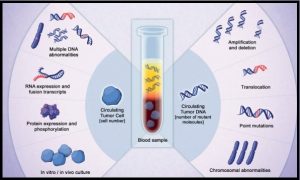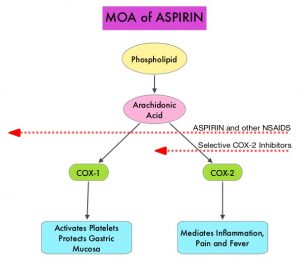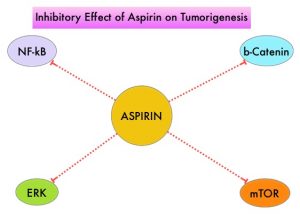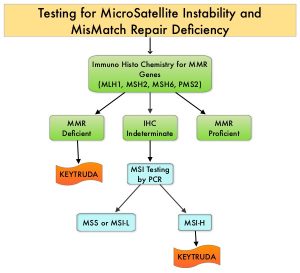SUMMARY: Colorectal Cancer (CRC) is the third leading cause of cancer-related deaths in men and women in the United States. The American Cancer Society estimates that approximately 149,500 new cases of CRC will be diagnosed in the United States in 2021 and about 52,980 patients will die of the disease. The lifetime risk of developing CRC is about 1 in 23.
Colorectal Cancer is a heterogeneous disease classified by its genetics, and even though the overall death rate has continued to drop, deaths from CRC among people younger than 55 years have increased 1% per year from 2008 to 2017, with 12% of CRC cases diagnosed in people under age 50. The proportion of the total number of patients diagnosed with CRC under the age of 50 yrs rose from 10% in 2004 to 12.2% in 2015 (P<0.0001). Younger adults presented with more advanced stage of disease (Stage III/IV) than those 50 yrs or older (51.6% versus 40.0% respectively). Based on these findings, the American Cancer Society in 2018 updated its guidelines to include a “qualified recommendation” to begin CRC screening at the age of 45 yrs. The increase in the incidence of CRC in young adults has been attributed to western style, high carbohydrate, high fat, low fiber diet, which can initiate inflammation and proliferation in the colonic mucosa within two weeks. Other lifestyle factors associated with CRC include obesity, high consumption of processed meat and alcohol, low levels of physical activity and cigarette smoking.
Preclinical studies have suggested that there is a very complex interplay of the immune system with the host’s microbiome and there may be a relationship between gut bacteria and immune response to cancer. The crosstalk between microbiota in the gut and the immune system allows for the tolerance of commensal bacteria (normal microflora) and oral food antigens and at the same time enables the immune system to recognize and attack opportunistic bacteria. Immune Checkpoint Inhibitors strongly rely on the influence of the host’s microbiome, and the gut microbial diversity enhances mucosal immunity, dendritic cell function, and antigen presentation.
There has been a significant increase in the global antibiotic consumption and colorectal cancer (CRC) rates in individuals aged less than 50 years since the late 1980s. Broad-spectrum antibiotics can potentially alter the bacterial composition and diversity of our gut microbiota, by killing the good bacteria. It has been postulated that this may influence CRC genesis in older patients and negate the benefits of immunotherapy and influence treatment outcomes. Quinolones and Sulfonamides/Trimethoprim antibiotics used to treat a wide range of infections have been associated with these right side colon cancers. It has been postulated that gut flora with more abundant Fusobacteria and Bacteroidetes may contribute to CRC development. The limited effect of Quinolones and Sulfonamides on anaerobic bacteria would therefore favor anaerobic bacteria such as Fusobacteria species and Bacteroidetes species, which may play a role in CRC development. The purpose of this analysis was to investigate antibiotics use in relation to subsequent CRC risk.
The authors conducted a matched case-control study using data from Swedish population from July 2005 to December 2016. Swedish personal Identity numbers enabled multiregister linkage and matching. The CRC cases identified using the Swedish Colorectal Cancer Register, were matched with controls from the Total Population Register. Data on antibiotics use were extracted from the Swedish Prescribed Drug Register, and other variables of interest were taken from the Swedish Inpatient Register and the Longitudinal Integration Database for Health Insurance and Labor Market Studies. All primary CRC cases were classified as proximal colon cancer (cecum, ascending colon, hepatic flexure, transverse colon, splenic flexure), distal colon cancer (descending, sigmoid colon), or rectal cancer (rectosigmoidal junction, rectum). Stages of CRC were categorized as early stage (Stage I-II) and late stage (Stage III-IV) based on TNM Classification. This nationwide, population-based study with a matched case-control design included 40,545 newly diagnosed CRC cases (67% in the colon and 33% in the rectum) and 202720 controls (for each CRC case, 5 controls were selected from the Total Population Register). Approximately 53% were men and 47% were women. Prespecified subgroup analyses (sex, age, and anatomical tumor site) were performed, and those with antibiotic use, within 2 years of CRC diagnosis were excluded. Antibiotics use reported as defined daily doses, was categorized as no use (no reported use of antibiotics during the study period), low (1-10 days), moderate (11-60 days), high (61-180 days), and very high (more than 180 days) use.
It was noted in this analysis that there was a positive dose-response association between antibiotics use and colon cancer. The CRC risk was mostly confined to proximal colon cancer for moderate use and for very high use, versus no use (P<0.001). The association between antibiotics use and risk of proximal colon cancer was more obvious among patients 50 years and older at the time of diagnosis, compared with patients younger than 50 years. There was an inverse association between antibiotics use and rectal cancer, probably reflecting differences in the bacterial flora at those two sites. When stratified by tumor stage, the positive association between antibiotics use and risk of proximal colon cancer was more pronounced in Stage I-II cancer compared with Stage III-IV cancer. In contrast, the inverse association in rectal cancer was limited to Stage III-IV. Quinolones and Sulfonamides and/or Trimethoprims were associated with increased risk of proximal colon cancer whereas Nitrofurantoins, Macrolides and/or Lincosamides, and notably, Metronidazoles and/or Tinidazoles (which exclusively inhibit anaerobic bacteria) were inversely associated with rectal cancer. Antibiotics across all classes generally had an inverse association for rectal cancer in women. There was no association noted between Methenamine hippurate, a urinary tract antiseptic not affecting the gut microbiota, and CRC risk.
It was concluded from this analysis that there was a consistent association between antibiotics use and higher subsequent risk of proximal colon cancer and an inverse association for rectal cancer in women. The authors added that these findings strengthen the evidence from previous investigations and provide new insights into site-specific carcinogenesis, as well as indirect support for the role of gut microbiota. This study provides further reasons to reduce, where possible, frequent and unnecessary antibiotic prescribing.
Antibiotics use and subsequent risk of colorectal cancer: A Swedish nationwide population-based study. Lu SSM, Mohammed Z, Haggstrom C, et al. JNCI: Journal of the National Cancer Institute, djab125, https://doi.org/10.1093/jnci/djab125




